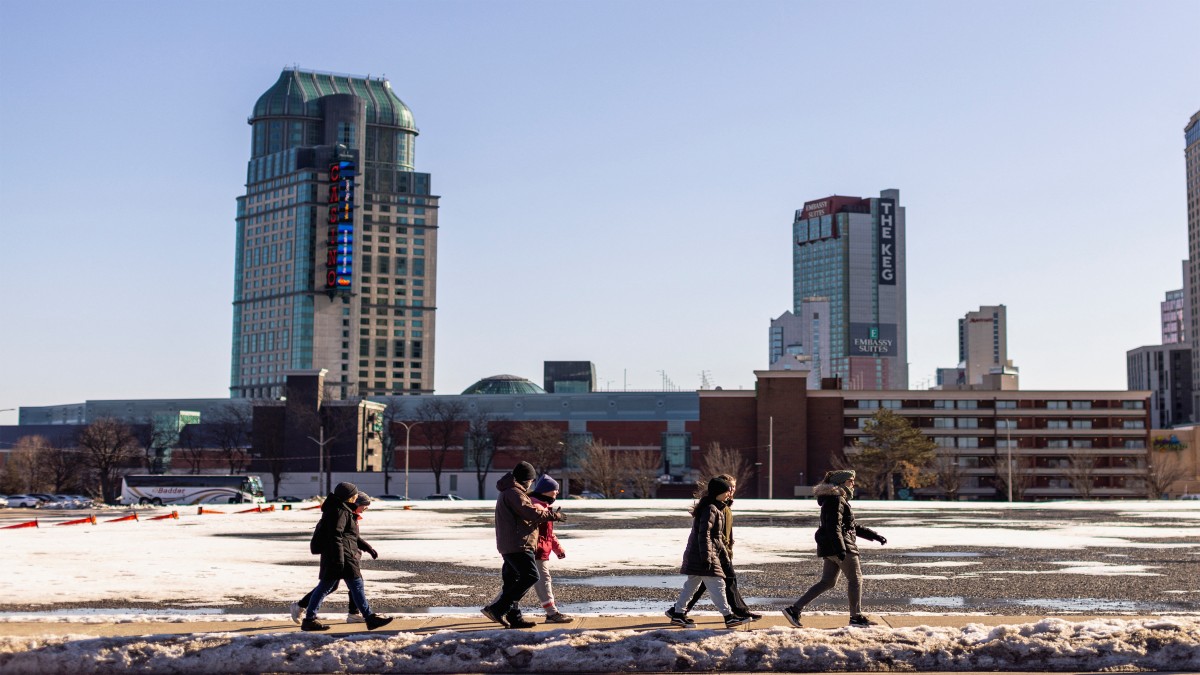Canada will no longer issue tourist visas with a maximum 10-year validity.
Earlier, the multiple-entry visa allowed the holder to enter the country as often as necessary during its period of validity.
The development comes amid mounting concerns about housing shortages, social infrastructure and evolving public opinion on immigration.
Here’s all we know about it.
Automatic 10-year tourist visas ended
According to the updated rules, immigration officials will now be able to choose whether to grant a visa for a single or multiple entry and to establish the proper duration of validity.
The Canadian immigration department stated in a recent update, “Guidance has been updated to indicate that multiple-entry visas issued to maximum validity are no longer considered to be the standard document. Officers may exercise their judgment in deciding whether to issue a single or multiple-entry visa and in determining the validity period.”
Factors that can be considered are the purpose of the visit, occupation, financial stability, health of the visitor and more. Additional factors include ties to the applicant’s home country and previous travel compliance.
Earlier, the multiple-entry visa allowed the holder to enter Canada from any country as often as necessary during the visa’s period of validity.
It has a maximum validity of up to 10 years, or until the expiry of the travel document or biometrics.
The department clarified, “It (multiple-entry visa) can still be valid if affixed in a full or complete passport or travel document. In this case, the holder must also be in possession of a newer and valid passport or travel document and must present both documents to the airline carrier to travel to Canada and to the border services officer to seek entry to Canada.”
The reason behind it
The latest measure of ending multiple-entry visas comes as Prime Minister Justin Trudeau’s government, which faces low approval ratings and anger over a housing shortage and a high cost of living, announced its plans to reduce both permanent and temporary immigration.
Last month, Immigration Minister Marc Miller said the Canadian government should have acted sooner to stem the flow of temporary migration into the country that has led to a housing crisis.
The flow of migration became “aggressive,” Miller last month told Reuters. “It’s safe to say that we own a part of that. It’s also safe to say, particularly on the inflow of temporary residents, that we perhaps should have acted a little sooner.”
Miller said he is conscious of the role he and the government can play in the perception, reflected in polls, that Canada has too many immigrants.
“We have to be very careful in where we ascribe the challenge, the correlation, the causation. We don’t want this dialogue to become weaponized,” he said.
Miller said he has told visa officials to be more rigorous and restrictive in processing applications. “Injecting a little more discipline into the system was important, and making sure that the visa process is a little more rigorous … It means being more restrictive in the visas that we give to people and who we give them to.”
Canada has always taken pride in its openness to
immigration, but rising housing costs have contributed to a change in the country’s debate on immigration in recent years.
Since two years ago, when interest rates began to rise, many Canadians have been pushed out of the housing market. Canada’s population has also reached record heights due to a massive immigration wave. A federal election is scheduled for October 2025, making this one of the most controversial topics in Canadian politics.
According to polls, an increasing number of people believe that there are too many immigrants in Canada. There has been increased reporting of hate crimes against visible minorities and a backlash against newcomers.
According to the federal government, cutting immigration could reduce Canada’s housing supply gap by 670,000 units by the end of 2027.
Earlier, Trudeau acknowledged this misalignment, stating, “We are acting today because in the tumultuous times as we emerged from the pandemic… we didn’t get the balance quite right.”
Measures taken
Trudeau’s government has already indicated plans to
reduce both permanent and temporary immigrants for the first time in years. This is a notable shift in policy for the Trudeau government as it tries to remain in power.
Under the plan, Canada expects more than one million people in the country to temporarily leave of their own accord in the coming years as their visas expire.
Canada will deport people who do not leave, Miller had said, adding, “Temporary means temporary and permanent means permanent.”
The country will also reduce its number of new permanent residents from 485,00 in 2024 to 395,000 in 2025, 380,000 in 2026 and 365,000 in 2027.
Canada said in 2021 it would provide immigration status to undocumented people, then walked back that promise, with Miller telling Reuters in August he would not pursue a broad programme.
It also capped the number of
international students Canada will bring in and tightened the rules on
temporary foreign workers under a programme that brings non-Canadians to the country to work on a temporary basis.
The programme came under fire for the ways it makes vulnerable workers, tied by visas to their employers, subject to abuse. A United Nations representative called it a “breeding ground for contemporary forms of slavery.”
Some economists welcomed these immigration cuts, aimed at easing the strain on housing and social services, but industry groups worry it could hurt Canada’s labour force.
“Every chamber of commerce always wants more people, and I think largely we have listened to them,” Miller said. But “as the federal government, we have a responsibility of looking at the economy and saying, ‘Well, where has this gotten a little overheated?’”
With inputs from agencies

)